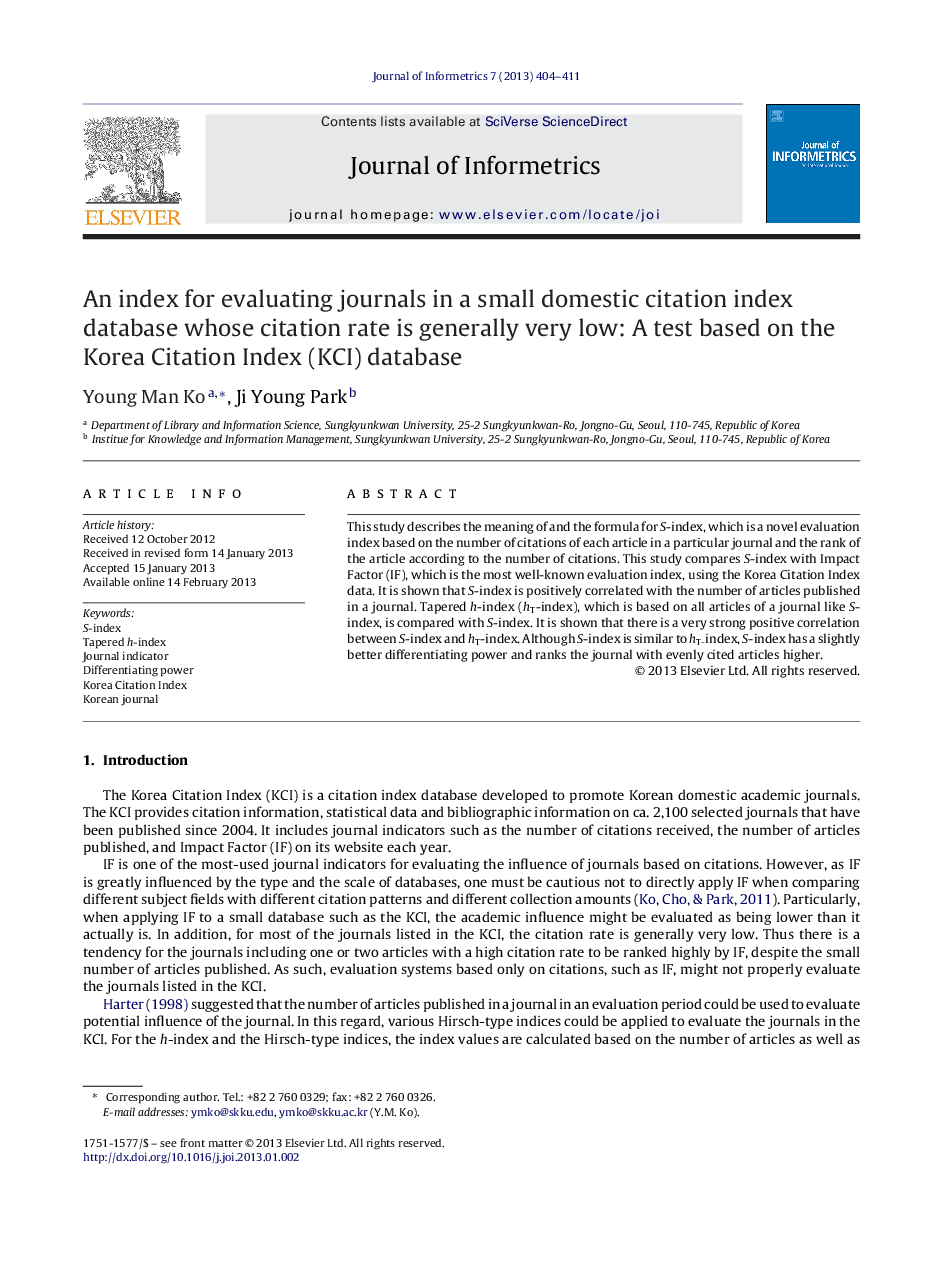| Article ID | Journal | Published Year | Pages | File Type |
|---|---|---|---|---|
| 523237 | Journal of Informetrics | 2013 | 8 Pages |
This study describes the meaning of and the formula for S-index, which is a novel evaluation index based on the number of citations of each article in a particular journal and the rank of the article according to the number of citations. This study compares S-index with Impact Factor (IF), which is the most well-known evaluation index, using the Korea Citation Index data. It is shown that S-index is positively correlated with the number of articles published in a journal. Tapered h-index (hT-index), which is based on all articles of a journal like S-index, is compared with S-index. It is shown that there is a very strong positive correlation between S-index and hT-index. Although S-index is similar to hT-index, S-index has a slightly better differentiating power and ranks the journal with evenly cited articles higher.
► A new index named S-index is proposed for evaluating journals in a small domestic citation index database with very low citation rate. ► S-index is based on the number of citations of each article in a journal and the rank of the article according to the number of citations. ► There is a very strong positive correlation between S-index and tapered h-index. ► S-index is positively correlated with the number of articles in a journal. ► S-index ranks the journal with evenly cited articles higher.
